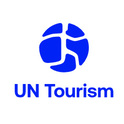UNWTO/GTERC Report : Asia and the Pacific grows in importance for Global Tourism
The World Tourism Organization (UNWTO), in partnership with the Global Tourism Economy Research Centre (GTERC), presented its Asia Tourism Trends Report today at the Global Tourism Economy Forum in Macao (China). The report shows Asia and the Pacific outperforming all world regions in growth in international arrivals since 2005.
'UNWTO/GTERC Asia Tourism Trends - 2018' shows that international tourist arrivals in Asia and the Pacific grew 6% in 2017 to reach 323 million, around a quarter of the world's total. Of all world regions Asia and the Pacific, the second-most visited after Europe, has grown the fastest in international tourist arrivals since 2005. Arrivals increased an average of 6% per year, above the world average of 4%.
Rapid economic growth in a region with over half the world's population, coupled with rising air connectivity, travel facilitation and large infrastructure projects, have boosted international travel in the region. This has had a large impact on Asian destinations' tourism earnings, which have steadily increased from 17% of the world total in 2000 to 29% in 2017. This is equivalent to US$ 390 billion in tourism receipts.
Asia and the Pacific plays a vital role as a source market as well, fuelling much growth in both regional and long-haul destinations. The region produced 335 million international travellers spending US$ 502 billion in 2017, 37% of the world total. Around 80% of Asia's these visits were concentrated in Asia destinations. Outside the region, 56% of the long-haul trips were to Europe.
EU-China Tourism Year
To celebrate the EU-China Tourism Year 2018, the report looks at international tourism between China, the largest economy in Asia, and the block of 28 European Union (EU) countries.
It finds that 5.7 million Chinese tourists travelled to Europe in 2016, of which 3.5 million went to the EU. In reverse, 5.5 million Europeans travelled to China in 2016, 3.1 million of whom from EU countries.
China's Greater Bay Area - a major outbound area
The last chapter of 'UNWTO/GTERC Asia Tourism Trends - 2018' provides an insight into the Greater Bay Area of China, a project to create a large socio-economic zone and tourism area comprising the two Special Administrative Regions of Hong Kong and Macao, as well as nine cities in Guangdong Province. According to the report, the Greater Bay Area is China's fastest-growing tourism region and the Pearl River Delta home to several cities with high tourism development including Guangzhou, Shenzhen, Zhuhai and Foshan.
Useful links:
- UNWTO/GTERC Asia Tourism Trends - 2018 Edition
- UNWTO World Tourism Highlights: 2018 Edition
- Infographics
About UN Tourism
The World Tourism Organization (UN Tourism) is the United Nations agency responsible for the promotion of responsible, sustainable and universally accessible tourism.
As the leading international organization in the field of tourism, UN Tourism promotes tourism as a driver of economic growth, inclusive development and environmental sustainability and offers leadership and support to the sector in advancing knowledge and tourism policies worldwide.
Our Priorities
Mainstreaming tourism in the global agenda: Advocating the value of tourism as a driver of socio-economic growth and development, its inclusion as a priority in national and international policies and the need to create a level playing field for the sector to develop and prosper.
Promoting sustainable tourism development: Supporting sustainable tourism policies and practices: policies which make optimal use of environmental resources, respect the socio-cultural authenticity of host communities and provide socio-economic benefits for all.
Fostering knowledge, education and capacity building: Supporting countries to assess and address their needs in education and training, as well as providing networks for knowledge creation and exchange.
Improving tourism competitiveness: Improving UN Tourism Members' competitiveness through knowledge creation and exchange, human resources development and the promotion of excellence in areas such as policy planning, statistics and market trends, sustainable tourism development, marketing and promotion, product development and risk and crisis management.
Advancing tourism's contribution to poverty reduction and development: Maximizing the contribution of tourism to poverty reduction and achieving the SDGs by making tourism work as a tool for development and promoting the inclusion of tourism in the development agenda.
Building partnerships: Engaging with the private sector, regional and local tourism organizations, academia and research institutions, civil society and the UN system to build a more sustainable, responsible and competitive tourism sector.
Our Structure
Members: An intergovernmental organization, UN Tourism has 160 Member States, 6 Associate Members, 2 Observers and over 500 Affiliate Members.
Organs: The General Assembly is the supreme organ of the Organization. The Executive Council take all measures, in consultation with the Secretary-General, for the implementation of the decisions and recommendations of the General Assembly and reports to the Assembly.
Secretariat: UN Tourism headquarters are based in Madrid, Spain. The Secretariat is led by the Secretary-General and organized into departments covering issues such as sustainability, education, tourism trends and marketing, sustainable development, statistics and the Tourism Satellite Account (TSA), destination management, ethics and risk and crisis management. The Technical Cooperation and Silk Road Department carries out development projects in over 100 countries worldwide, while the Regional Departments for Africa, the Americas, Asia and the Pacific, Europe and the Middle East serve as the link between UN Tourism and its 160 Member States. The Affiliate Members Department represents UN Tourism's 500 plus Affiliate members.
